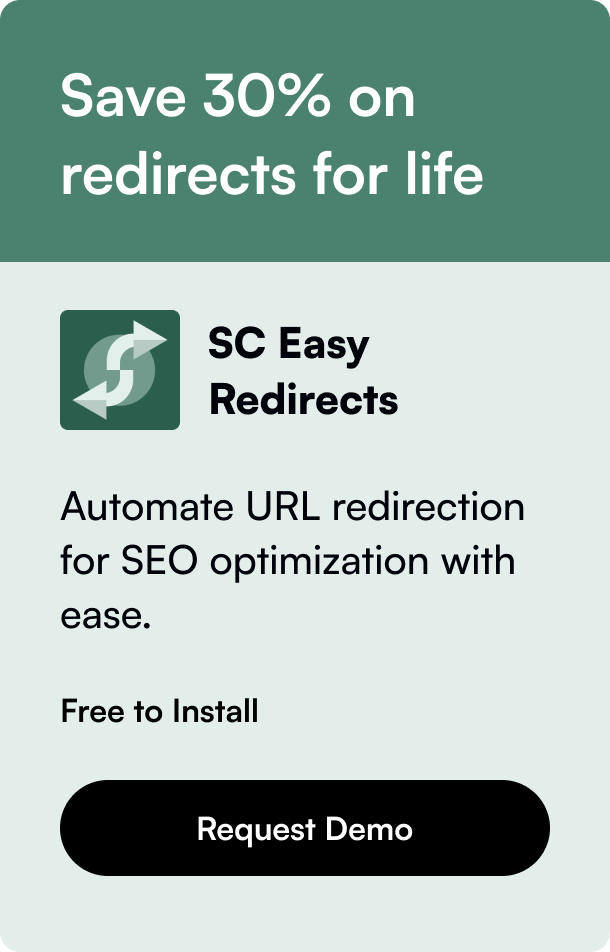Table of Contents
- Introduction
- Why Change Your Shopify Store URL?
- How to Change Your Shopify Store URL
- Handling SEO and Redirects
- Conclusion
- FAQ
Introduction
Have you ever found yourself in a situation where your Shopify store's URL no longer represents your brand accurately? Perhaps when you initially started, the name perfectly encapsulated what you were selling, but as your store has evolved and expanded its offerings, the original URL has become a constraint rather than a selling point. Here's where the importance of understanding how to change the URL of your Shopify store comes into play.
Changing your Shopify store's URL can be an integral part of rebranding efforts, improving SEO, or simply making your site more accessible and memorable to customers. In this blog post, we'll dive deep into why you might consider changing your store's URL, the steps involved in making the change, potential impacts on SEO, and how to ensure a smooth transition for your users. By the end of this definitive guide, you'll be equipped with all the knowledge you need to confidently update your Shopify store's domain.
Why Change Your Shopify Store URL?
Keeping Up with Rebranding
As businesses grow, rebranding is a common step. Your original URL might not fit your expanded or shifted business model. Updating your URL to reflect your rebranded business can help maintain brand consistency across all platforms.
SEO Benefits
A well-chosen URL can significantly impact your store’s SEO. Including relevant keywords in your domain can improve your store’s visibility in search results, driving more organic traffic to your site.
Improving Customer Perception
A URL that's easy to remember and spell can enhance the customer experience. It makes it easier for repeat customers to return to your store and for satisfied customers to refer friends.
How to Change Your Shopify Store URL
Step 1: Purchase a New Domain
Before anything else, you’ll need to obtain the new domain you want your Shopify store to use. This can be done directly through Shopify or through third-party domain registrars. Keep in mind the importance of choosing a domain name that's short, memorable, and reflective of your brand.
Step 2: Add Your New Domain to Shopify
After purchasing your new domain, the next step is to add it to your Shopify store. Navigate to Shopify Admin > Online Store > Domains, and click on 'Connect existing domain'. Enter your new domain name here.
Step 3: Set Your New Domain as the Primary Domain
Once your new domain is added, you need to set it as the primary domain. This action redirects all traffic from your old Shopify URL to the new one, ensuring no customer trying to access your store gets lost.
Step 4: Update DNS Settings
If your new domain was purchased outside Shopify, update its DNS settings to point to Shopify's servers. This step ensures that when someone types your new domain into their browser, they reach your Shopify store.
Step 5: Inform Your Customers
Change can confuse customers. It’s critical to communicate with your audience about your new URL. Use email newsletters, social media posts, and onsite banners to inform your customers about the change and redirect them properly.
Handling SEO and Redirects
301 Redirects: Your Best Friend
To retain your SEO strength and make sure any bookmarks or links to your old domain still work, set up 301 redirects in your Shopify admin. This tells search engines that your site has moved permanently to the new URL.
Inform Google
Update your information in Google Search Console to help Google understand that your site’s location has changed. This step is crucial for maintaining your site's current search engine ranking.
Keep an Eye on Analytics
Monitor your site's performance through analytics closely after the change. Look out for any significant drops in traffic or engagement, as these could indicate issues with the transition.
Conclusion
Changing your Shopify store's URL is a significant step that requires careful planning and execution. By following the outlined process and considering SEO implications, you can ensure a seamless transition to your new domain. Remember, the goal of switching URLs is not just to reflect your current brand better but also to set the stage for future growth.
As customers continue to align themselves more closely with brands they identify with, ensuring every aspect of your online presence, including your URL, accurately represents your brand is more important than ever. With this comprehensive guide, you're now ready to make that pivotal change confidently and strategically.
FAQ
Q: Will changing my Shopify store URL affect my store's data?
A: No, changing your store's URL does not affect your product listings, customer data, or any other store content. It only changes how customers access your store.
Q: How long does it take for the new URL to start working?
A: After updating DNS settings, it can take anywhere from a few hours to 48 hours for the new domain to become fully functional.
Q: Can I revert back to my old URL if I change my mind?
A: Yes, you can revert to your old URL by setting it as the primary domain in your Shopify admin. However, frequent changes can confuse customers and negatively affect SEO, so it's best to stick with your new URL once changed.
Q: Do I need to notify search engines about the change?
A: While setting up 301 redirects helps, it's also a good practice to notify search engines directly through their respective webmaster tools to ensure they are aware of the new domain.








